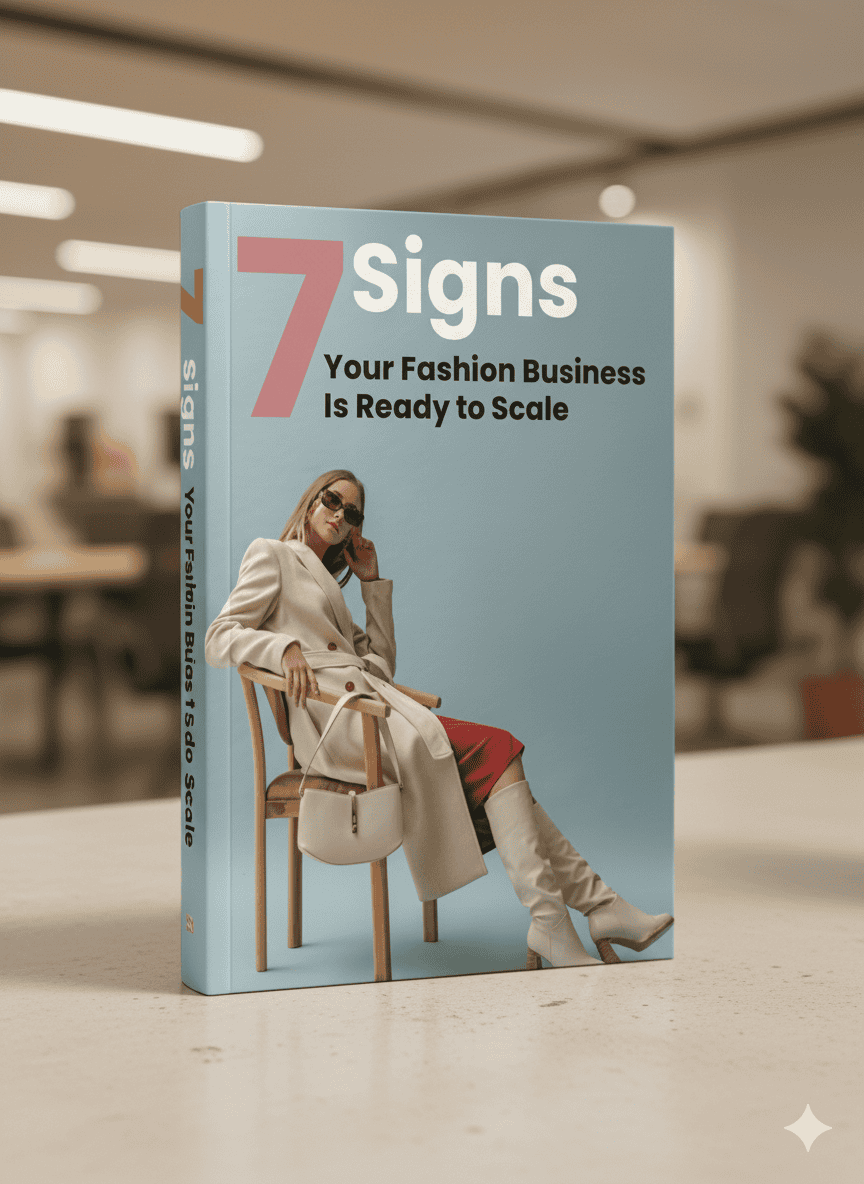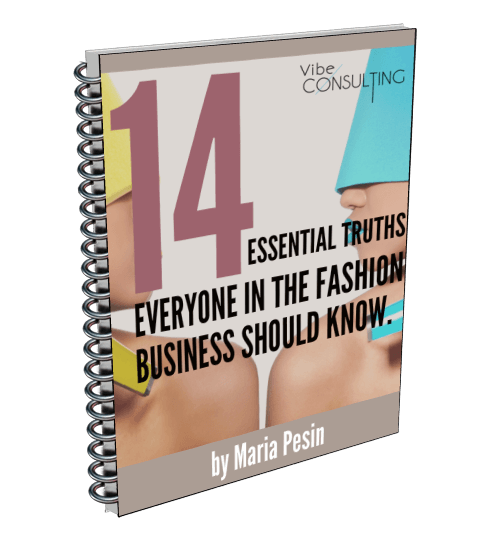Fashion design has always been a mix of magic and muscle—equal parts intuition, artistry, and hard-earned experience. But in today’s fast-moving market, gut instinct isn’t enough. Fashion brands are under pressure to deliver more collections, with faster turnarounds, tighter budgets, and sharper hit rates. The traditional process—mood boards, sketching, endless sampling—can’t keep up.
Enter Artificial Intelligence.
But let’s be clear: AI isn’t here to replace designers. It’s here to help them work smarter—by analyzing data, predicting trends, automating repetitive tasks, and aligning design with real-time demand. In this second installment of our AI x Fashion Business series, we explore how brands are using AI to design collections that are faster to market, more relevant to the consumer, and more profitable—without sacrificing creativity.
1. Speeding Up the Design Cycle
The fashion design cycle is notoriously time-consuming. From initial concepts to tech packs to physical samples, every round of revision can take weeks. AI speeds up this process significantly.
Platforms like CALA, Designovel, and Fashable allow designers to input ideas—either visual inspiration, text prompts, or aesthetic direction—and receive dozens of AI-generated sketches, mockups, and even tech packs within hours. These tools leverage massive datasets from past trends, sales data, and visual libraries to build out designs that are both creatively aligned and commercially viable.
CALA, for example, has become an all-in-one platform for design and production. A designer can input “’90s minimalism for Gen Z,” upload a few references, and receive a draft collection complete with suggested fabrics, silhouettes, and Pantone-matched color palettes. The best part? These designs are production-ready.
Real-world benefit: A process that once took 4–6 weeks now takes 2–3 days, leaving more time for strategy, iteration, and testing.
2. Designing for Demand: Predictive Intelligence in Practice
While inspiration is personal, market success is mathematical. Predicting which styles, colors, and categories will perform well has traditionally been a mix of trend forecasting and instinct—but AI brings science into the art.
Tools like Heuritech use computer vision to scan billions of social media images from platforms like Instagram, TikTok, and Pinterest. By tagging silhouettes, color schemes, and styling details, the system can forecast whether a trend is rising or falling, which demographics are embracing it, and how quickly it will reach saturation.
This allows designers and merchandisers to spot key ideas before the competition—and avoid investing in trends that are already fading.
Use case: A contemporary womenswear brand used Heuritech to spot a spike in light green tones and ruched details. They fast-tracked development for those styles and saw a 45% increase in sell-through compared to the previous collection.
3. Smarter Fabric and Material Selection
AI doesn’t just assist with aesthetic choices. It can also optimize material selection based on performance, sustainability, availability, and cost. Some platforms integrate with suppliers and mills to surface fabric options that meet your criteria and are currently in stock or available locally.
For example, if you want a moisture-wicking fabric with a low carbon footprint, AI tools can recommend suitable textiles and suppliers, along with comparative cost and shipping times. This not only saves time but ensures that your material choices align with brand values and production needs.
Bonus: Machine learning can also analyze past quality issues, return rates, and customer feedback to recommend better-performing materials.
4. From Physical Sampling to Digital Twins
Sampling is one of the most expensive and frustrating parts of the design process—especially when you’re dealing with overseas factories, multiple rounds of revisions, and tight timelines.
3D design tools enhanced by AI, such as Browzwear, CLO 3D, and TUKA3D, allow designers to create hyper-realistic digital twins of garments. These digital garments can be styled, adjusted, and visualized in motion—all before a single piece of fabric is cut.
Factories can use these virtual samples to understand design intent and construction, dramatically reducing the number of physical prototypes needed.
Impact: Some brands report cutting sampling costs by up to 60% and reducing lead time by 30–40%.
5. AI as the Designer’s Creative Assistant
Let’s talk about the creative block.
We’ve all been there: staring at a blank sketchpad (or screen), knowing you need a fresh take but feeling out of gas. AI tools are now acting as virtual brainstorming partners. With natural language prompts, you can ask an AI model to suggest “5 capsule collection ideas for minimalist fall fashion inspired by Paris street style.” Within seconds, you’ll receive a list of concepts, mood board references, and even color combinations.
Of course, it’s not doing the work for you—but it sparks ideas, shortens the research phase, and opens up creative pathways you might not have considered.
Think of it like this: AI is your most well-read, data-literate, trend-savvy intern—minus the coffee runs.
6. Cross-Department Collaboration with PLM Systems
Many brands struggle with operational inefficiencies—especially when design, product development, and production teams aren’t in sync. This is where AI-powered Product Lifecycle Management (PLM) platforms like Backbone PLM or SupplyCompass shine.
These systems centralize data: sketches, BOMs (bills of materials), measurements, costs, vendor communication, and timelines. With AI integration, these platforms can:
- Flag missing information before delays occur
- Predict cost overages based on current choices
- Suggest time-saving design changes that reduce production complexity
By aligning everyone on the same platform, AI reduces friction and costly miscommunication—something every scaling brand needs.
7. Real Brand Case Studies
Let’s look at a few brands already putting these principles into action:
Tommy Hilfiger
Partnered with IBM and FIT to launch an AI project that scanned fashion shows, customer behavior, and global trends. It then suggested design directions that were aligned with both the brand’s DNA and what the market was ready for.
Result: Faster design turnaround and more data-informed creative choices.
Reformation
Uses AI to guide restocking and material use. Based on sales velocity and return rates, the brand can decide which styles should be carried forward and which fabrics to cut or replace.
Result: Lower waste, better margins, and stronger sustainability metrics.
Petit Pli
This children’s brand incorporates AI and aerospace tech to develop clothing that grows with the wearer. Their designs are modular and adaptive—using data from child growth patterns to inform construction.
Result: Products that combine innovation, sustainability, and true consumer need.
8. How to Get Started with AI in Design
Getting started doesn’t require an overhaul. Here’s how to dip your toe into AI design, even as a small brand:
- Identify a Design Pain Point
Sampling taking too long? Unsure what trends to follow? Looking for better material sourcing? Pick one area to improve. - Choose a Tool that Fits Your Budget & Team
Start with a single platform. Tools like CALA, Heuritech, or even Shopify Magic (for copywriting) offer free trials or startup pricing. - Test on a Capsule Collection or One Category
Don’t try to “AI-ify” everything. Use it to streamline one product launch and evaluate the results. - Use AI as Input, Not Instruction
Let the data inform your decisions, but maintain your brand’s identity and creative control. - Measure Impact
Track how AI improves timelines, reduces waste, increases margin, or improves bestsellers. If it works, scale from there.
9. Common Misconceptions About AI in Design
Let’s debunk a few myths:
- “AI will kill creativity.”
In reality, AI enhances it. It automates repetitive work, freeing you up to be more creative—not less. - “Only big brands can afford this.”
Many platforms are priced for startups or offer usage-based plans that grow with you. - “It’s too technical.”
Modern tools are built for usability. If you can use Shopify, you can use AI design platforms.
10. The Future of Fashion Design Is Data-Driven
The role of the fashion designer is evolving. In today’s landscape, a successful designer isn’t just someone with vision—they’re someone who can marry vision with insight. They understand trends and data. They use tools that give them leverage. They build collections that connect with culture and convert on the sales floor.
AI isn’t here to tell you what to design. It’s here to show you what’s working, help you move faster, and let you focus on what only a human can do—create beauty, tell stories, and build emotional connections.
In Summary: Art + Algorithm = Smart Design
If you’re a growing fashion brand, AI is one of the most powerful tools you can use to level the playing field. It won’t compromise your creativity—it will enhance it. With the right tools and mindset, you can move from reactive to predictive, from guesswork to grounded strategy, and from slow cycles to agile, inspired execution



